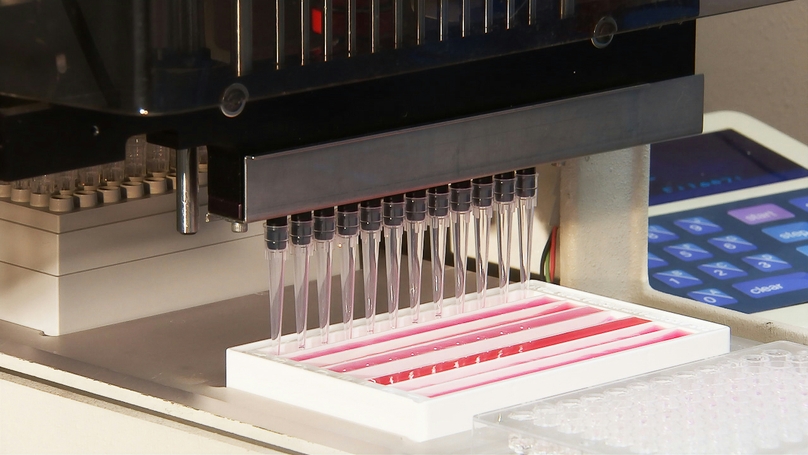Drug Discovery and Inventory Management Challenges
The process of developing new drugs and bringing them to market is both complex and costly, requiring considerable time and resources. A standard drug discovery program requires the systematic design, synthesis, and evaluation of hundreds to thousands of potential drug candidates prompting academic scientists to rely on various software solutions. Prior to the emergence of digital systems, laboratories primarily depend on paper-based methodologies, including logs and spreadsheets, to record inventory levels, monitor usage, and manage orders. This reliance required physical counting of items and maintenance of handwritten records, often demanding significant time to update and reconcile data.
As of 2024, a substantial number of established analytical laboratories continue to utilize paper documents and Excel spreadsheets for data generation and compilation. While it is possible to operate a laboratory using rudimentary tools, such practices complicate efforts to scale operations, particularly when operational efficiency is significantly reliant on pen-and-paper methods. The dependence on paper records not only increases the likelihood of errors and non-compliance but also hinders the analysis of extensive datasets for identifying trends. Certain regulatory standards require additional reviews of data derived from handwritten records due to the heightened risk of transcription errors.
As a result, pharmaceutical companies face substantial costs stemming from their inability to quickly access critical data, particularly during drug discovery and clinical trials. This inefficiency is exacerbated by the frequent need to reenter the same data at multiple stages, as standalone automated systems are typically not designed to facilitate information sharing. In response to these challenges, comprehensive software systems capable of tracking raw data from sample intake to the generation of a certificate of analysis have emerged as the standard across various laboratory environments. Furthermore, innovative techniques have been developed and implemented to leverage the growing volume of information stored in databases, especially in light of the increasing availability of public data.
In this context, Genemod offers a viable solution through its Electronic Lab Notebook (ELN), which enhances the management of new drug development Process within the laboratory.
The implementation of conventional systems in laboratories has posed several challenges, including high costs and limited flexibility in adapting to changes in data sources and workflows. However, as the costs of laboratory automation continue to decline, the increasing volume of data generated from fields such as genomics, proteomics, and metabolomics enables the functional testing of thousands of genes across a variety of experimental systems. This transition is fundamentally transforming discovery science, particularly in smaller laboratories that are now equipped to undertake more complex investigations. To effectively manage these intricate projects, which often require multidisciplinary teams and high-throughput instruments, robust software solutions such as Laboratory Inventory Management Systems (LIMS) are essential. These systems facilitate the tracking of a wide range of reagents and perturbagens, thereby enhancing the overall efficiency and effectiveness of laboratory operations in this evolving scientific landscape.
Key features of Laboratory Inventory Management Software
Laboratory Inventory Management Software (LIMS) is the core backbone of a laboratory’s operations. An ideal LIMS includes features such as stock tracking, inventory audits, order management, and expiration monitoring, all of which ensure timely replenishment and adherence to safety standards. By optimizing resource management, a well-implemented LIMS contributes to significant cost savings and enhances overall operational efficiency, thereby allowing researchers to concentrate more fully on their scientific inquiries.
Genemod LIMS is specifically designed to enhance inventory management in pharmaceutical labs while being less time-consuming and maintaining a cost-effective approach. By streamlining inventory processes, LIMS not only boosts laboratory productivity but also reinforces compliance with regulatory standards and supports quality control initiatives.
If you’re looking to optimize both time and budget efficiency in laboratory operations, consider trying Genemod’s laboratory automation software, specifically designed for clinical research.
Revolutionizing Clinical Research Labs with ROI-Driven LIMS
In clinical research laboratories, a large number of scientists routinely handle and relocate reagent chemicals, which presents significant logistical challenges. Keeping the locations of tens of thousands of chemical containers updated in an electronic inventory system is particularly difficult. This system requires scientists to access a computer in the laboratory and log in to update the status of the chemical containers whenever they are taken or moved, a process that can take several minutes. Often, scientists may postpone this task, leading to the risk of forgetting to make the necessary updates, which results in an inaccurate database. Consequently, if chemicals are not in their designated locations, locating the required substances can become a time-consuming and frustrating experience.
To address these challenges, Genemod has introduced comprehensive search tools that allow for the instantaneous location of every sample and reagent within the laboratory. This functionality not only streamlines the product development process but also significantly improves the management of physical items, leading to enhanced laboratory efficiency and therefore a measurable return on investment (ROI). By reducing time spent searching for materials, laboratories can accelerate research timelines and optimize resource allocation.
Boosting Drug Discovery Efficiency with LIMS
Research indicates that the development of a new pharmaceutical drug typically spans 10 to 15 years and incurs costs exceeding $800 million. This significant financial burden is primarily due to high attrition rates, with thousands of compounds evaluated for each drug that ultimately gains regulatory approval. Additionally, the constantly changing project portfolio results in a diverse array of consumables needed across various projects and departments, leading to low order frequency and variable consumption rates. The demand for laboratory instruments also fluctuates based on the active projects at any given time. Consequently, managing laboratory inventory and assets in the pharmaceutical industry during the drug discovery process presents significant challenges.
However, implementing laboratory inventory management software enables pharma labs to streamline operations, cut costs, and enhance drug discovery efficiency, ultimately simplifying this complex and expensive process.
The software can provide real-time visibility of stock levels, enabling scientists to see what supplies are available without making unnecessary trips to the stock room. Alerts can notify them when drug supplies are low, helping them plan orders proactively. Further, the software can automate inventory replenishment based on usage patterns. When stocks fall below a certain threshold, the system can automatically generate orders, reducing the risk of running out during experiments.
Current observations reveal significant obsolescence in inventory due to the bulk purchasing of items in anticipation of specific project needs. When project priorities shift, these items often remain unused, as there’s no centralized system for visibility across different groups or departments. Consequently, these consumables are left in local storage and ultimately discarded to free up space, leading to unnecessary waste. A unified platform like LIMS in clinical labs, would allow all teams to access and utilize surplus items, ensuring better resource management and reducing waste.
Ensuring Regulatory Compliance
A laboratory quality management system consists of a structured and integrated framework of activities designed to manage and regulate work processes spanning from preanalytical to postanalytical stages. Good laboratory practices (GLP) play a crucial role in enhancing the quality and traceability of results in health sciences research labs.
Over the decades, government regulations concerning laboratory practices and the development of quality management systems have been extensively discussed. Clinical laboratories continuously strive to enhance their processes to achieve cost-effectiveness and scientific validity, which in turn positively impacts patient care.
Current scientific evidence suggests that this process improvement can be achieved through the adoption of new technologies, including laboratory inventory management software. The software serves as a vital tool for facilitating resource management, performance evaluations, and ongoing improvements, ultimately ensuring the delivery of reliable and consistent quality outcomes in health sciences research.
Future Trends in Laboratory Inventory Management
The adoption of laboratory inventory management software enables the pharmaceutical and healthcare sector to optimize workflows, lower expenses, and improve the effectiveness of drug discovery. Cloud-based systems within Laboratory Information Management Systems (LIMS) offer significant advantages, including enhanced security, rapid scalability, dynamic service allocation, and improved collaboration among research teams through shared environments.
The benefits associated with cloud technology have accelerated the development of cloud-based data management solutions, making them an attractive alternative to traditional on-premise software. Consequently, an increasing number of laboratories are adopting cloud-based tools that facilitate seamless data access and enable real-time sharing with clinicians, fostering more integrated and responsive research environments. A key advantage of these applications is their provision of virtually unlimited data storage and automatic backups, protecting against potential data loss due to unforeseen events. This convergence of technology highlights the transformative potential of cloud solutions in enhancing research capabilities and improving healthcare outcomes. The integration of processing capabilities with LIMS, efficient data review mechanisms, and the exploration of future features such as real-time feedback, automatic method optimization, and AI model training will be crucial for advancing the field of drug discovery.
If you are looking to transform your laboratory operations with LIMS software, try Genemod’s cutting-edge cloud-based LIMS solution tailored for research laboratories.
References
1. P Lemmon, V., Jia, Y., Shi, Y., Douglas Holbrook, S., L Bixby, J., & Buchser, W. (2011). Challenges in small screening laboratories: implementing an on-demand laboratory information management system. Combinatorial chemistry & high throughput screening, 14(9), 742-748.
2. Xcelpros. (05-11-2021). Pharmaceutical Inventory Management: Challenges and Solutions. Cloud Solutions Provider. Retrieved 9/2/2024 from https://xcelpros.com/pharmaceutical-inventory-management-challenges-and-solutions/
3. Duda, D. (2024). Best Lab Inventory Management Software,. Retrieved 9/2/2024 from https://www.g2.com/categories/lab-inventory-management
4. Aimee Cichocki. (2024). Laboratory inventory management for the 21st century. colabra. Retrieved 10/2/2024 from https://www.colabra.ai/blog/laboratory-inventory-management-for-the-21st-century/
5. Ganesan, K. (2023). How to get ROI from your Laboratory Inventory Software? Lab Executive. https://www.labexecutive.com/2023/01/22/how-to-get-roi-from-your-laboratory-inventory-software/
6. Liu, C., & Zhang, H. (2024). Data processing for high-throughput mass spectrometry in drug discovery. Expert Opinion on Drug Discovery, 1-11.
7. Carl Swanson. (2024). Integrating Scientific Data Management and LIMS in Biologics Drug Discovery. StackWave Affinity. https://www.stackwave.com/laboratory-software-blog/integrating-scientific-data-management-and-lims-in-biologics-drug-discovery
8. Todd Quillen. (2024). The Role of LIMS in Achieving Regulatory Compliance. LIMSey. https://www.limsey.com/blog/the-role-of-lims-in-achieving-regulatory-compliance/
9. Paul, S., Gade, A., & Mallipeddi, S. (2017). The state of cloud-based biospecimen and biobank data management tools. Biopreservation and Biobanking, 15(2), 169-172.


















